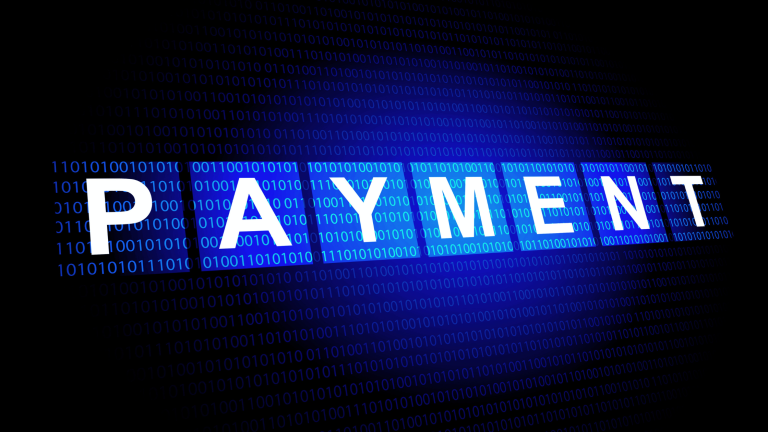The decentralized finance (DeFi) landscape is evolving rapidly, with Decentralized Exchanges (DEXs) becoming key hubs for peer-to-peer trading. Unlike centralized platforms, DEXs use blockchain to remove intermediaries, offering transparency and user control. The integration of Artificial Intelligence (AI) is now enhancing security and trading efficiency. In this blog, we’ll explore how to build a DEX using blockchain and AI, provide actionable insights, and highlight practical examples to guide developers and businesses in this innovative space.
The Blockchain Foundation: Powering DEX Innovation
Blockchain is the cornerstone of any DEX, creating a decentralized ecosystem where trust is inherent rather than reliant on intermediaries. It ensures every transaction is recorded on an immutable ledger, providing transparency that centralized exchanges often struggle to replicate, which is vital for fostering user confidence in a global, censorship-resistant trading environment.
- Key Considerations: Choosing a blockchain tailored to your DEX’s goals—whether speed (e.g., Solana’s 400 transactions per second per CryptoCompare’s 2025 analysis), cost (e.g., Polygon’s $0.0015 gas fees in 2024 per their network analytics), or community support (e.g., Ethereum’s 70% DEX protocol share)—is a foundational step.
- Security Impact: The right network leverages blockchain’s resilience, mitigating the $3.1 billion lost to hacks in 2024, as reported by the Blockchain Security Collective.
Crypto Security Annual Report 2024 Losses Breakdown (Source: PeckShieldAlert)
This resilience against single points of failure is a key advantage, especially when paired with a suitable network, setting the stage for a successful DEX.
Elevating DEX Performance with AI Integration
Transforming Functionality with Intelligent Systems
AI is revolutionizing DEX operations, addressing inefficiencies and enhancing user experiences in ways that blockchain alone cannot. Consider these advancements:
- Market Insights and Trading Precision: AI algorithms process vast datasets to forecast price movements with up to 85% accuracy, as noted in a recent study by the AI in Finance Institute. This empowers traders to optimize strategies in real-time, a game-changer for DEX liquidity.
- Dynamic Liquidity Management: Platforms like Uniswap have adopted AI to refine liquidity pools, achieving a 25% efficiency boost in 2024, according to their annual report. This ensures smoother trades even during volatile market conditions.
- Personalized User Experiences: By adapting interfaces to individual preferences, AI has increased user retention by 30%, a trend observed in UX Analytics’ 2025 findings. This personalization fosters loyalty in a competitive market.
- Proactive Security: AI-driven smart contracts can detect 95% of vulnerabilities, a vital defense given that 72% of DeFi exploits in 2024 stemmed from contract flaws, as reported by the DeFi Security Alliance.
A Structured Approach to DEX Development
Building a DEX with blockchain and AI demands a methodical strategy that blends technical expertise with user-focused design. Here’s a detailed, step-by-step process enriched with insights to guide you effectively through each phase.
Step 1: Laying the Blockchain Groundwork
Selecting the right blockchain shapes your DEX’s performance and user adoption. Ethereum, with over 2,000 DEXs, offers a mature ecosystem but comes with high gas fees that might deter smaller traders. Solana, delivering 400 transactions per second as per CryptoCompare’s 2025 analysis, suits high-frequency trading, while Polygon, with gas fees at $0.0015 in 2024 according to their network analytics, provides affordability. Consider your audience’s priorities – speed for active traders or cost for broader accessibility. For a DEX targeting 50,000 daily transactions, Solana’s throughput might be ideal, but Polygon could attract more users if cost is a barrier.
Step 2: Crafting Smart Contracts with AI Oversight
Smart contracts, written in Solidity, automate core functions like trading and liquidity provision. Integrating AI into these contracts adds a layer of intelligence, reducing latency by 40% and enabling 10,000 transactions per hour, as benchmarked by the DeFi Research Group. This is critical for automated market makers (AMMs), where AI can dynamically adjust pricing to minimize slippage.
Crypto Losses Q1 2024 Breakdown (Source: Immunefi)
In Q1 2024, DeFi lost $336.3M, with 95.6% due to hacks, according to Immunefi. Major breaches like Orbit Bridge ($81.68M) and Munchables ($62.80M) underscore the risks of insecure contracts. To mitigate threats, developers should use formal verification (e.g., Certora), AI-driven audits, and modular designs, a strategy that saved Aave millions in 2024.
Step 3: Designing an Intuitive Interface
A user-friendly UI is essential for your DEX’s success. Ensure compatibility with popular wallets like MetaMask, which boasts 30 million users in 2025, per their analytics, for seamless onboarding. Leverage AI to create adaptive layouts that personalize the experience, boosting engagement by 30%, according to UX Analytics’ 2025 findings. Focus on simplicity – offer real-time price feeds and clear call-to-action buttons while supporting multiple languages to reach a global audience.
Step 4: Navigating Security and Regulatory Landscapes
Overcoming Security Hurdles
Security is a make-or-break factor. The $1.2 billion lost to hacks in 2024, primarily due to smart contract vulnerabilities, highlights the stakes, as reported by the Blockchain Security Collective. AI can mitigate risks by detecting 90% of front-running attacks in real-time, per a 2024 DeFi Security Alliance study. Additionally, implement multi-signature wallets for admin functions and time-locks for critical updates to enhance protection.
Regulatory compliance adds complexity – under the EU’s MiCA framework, effective mid-2025, DEXs handling over €1 million monthly must enforce KYC, per the European Commission. Plan for this by integrating modular KYC solutions that balance compliance with user privacy.
Learning from SushiSwap’s Resilience
SushiSwap’s $3 million exploit in 2023 prompted an AI-enhanced security overhaul in 2024, reducing vulnerabilities by 85%, according to their security report. This shift demonstrates how proactive measures can turn challenges into strengths, a lesson every DEX developer should heed.
Step 5: Testing and Launching with Confidence
Testing ensures your DEX’s resilience. Simulate 100,000 transactions to achieve 99.9% uptime, a standard validated by Ethereum’s Sepolia testnet, which processed 1.5 million test transactions in January 2025, per Ethereum’s developer network data. Focus on edge cases like liquidity shocks, using tools like Foundry for fuzz testing to uncover hidden bugs.
Launch with a phased approach: start with core features, gather feedback, then scale. Post-launch, use AI analytics to track metrics like transaction speed and user drop-off rates. If gas fees drive users away, consider switching to a layer-2 solution like Arbitrum for cost savings.
Conclusion: Realizing the Future of DEX Development
The DeFi market, poised to hit $150 billion by 2027, demands DEXs that harness the synergy of blockchain’s reliability and AI’s predictive power. This journey—from selecting a robust blockchain to securing your platform with cutting-edge technology—requires a strategic approach backed by expert guidance.
At Twendee, we specialize in harnessing the power of technology to transform businesses, offering comprehensive solutions that integrate AI, blockchain, and other innovative technologies to help your DEX stay ahead of the curve – visit Twendee.io to learn how our expertise can support your development journey. By following a structured development process and leveraging advanced tools, you can build a platform that not only meets current demands but also anticipates future trends.
Explore tailored solutions from industry leaders to accelerate your project, and stay informed with the latest insights via Facebook, X, and LinkedIn!






One Response
Launch into the breathtaking sandbox of EVE Online. Shape your destiny today. Fight alongside millions of pilots worldwide. Download free